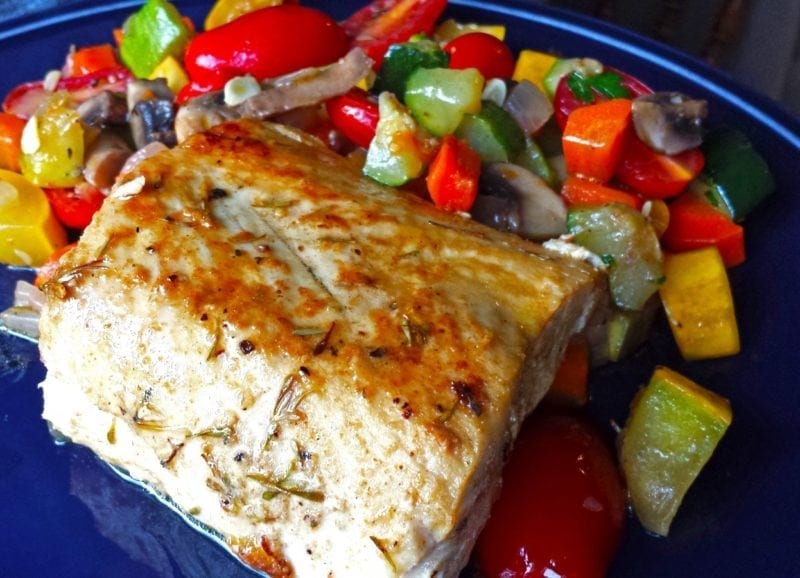
Wild caught Mahi Mahi is delicious with just a little salt and pepper and a sear in the pan. This marinade is not overpowering but lends some extra flavor to a fish that is already delicious. In addition to being healthy, it is a perfect weeknight meal because it can be marinated ahead of time and goes from the pan to the table in less than 10 minutes. We like to serve it with Ratatouille! They go really well together!
The big question I get is should I buy wild caught mahi mahi or is farm raised a decent option? Both have some pluses and minus. Let’s examine the ups and downs of the two options when it comes to mahi mahi.
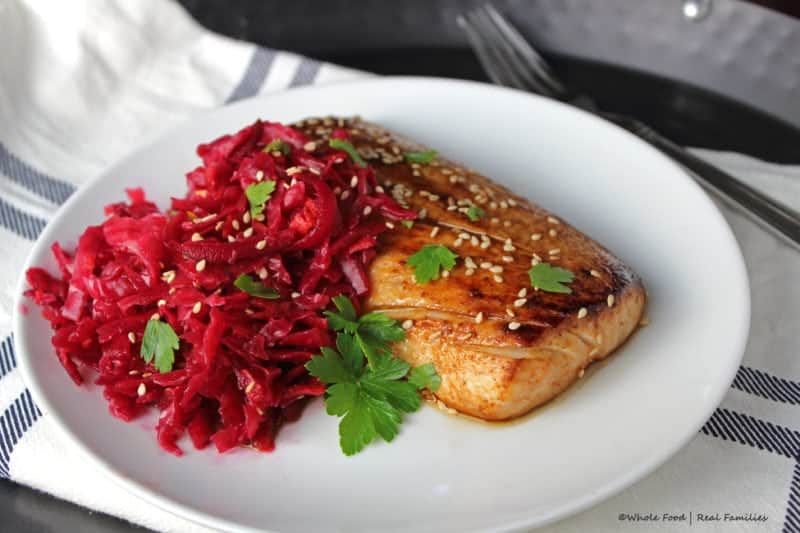
What is farm raised mahi mahi?
Farm-raised Mahi-Mahi are raised in a controlled aquatic environment such as fish ponds or tanks. These fish are usually fed a formulated diet that includes fishmeal, soy, and other supplements to try to maximize their growth and survival.
Mahi-Mahi is farmed all over the world with the largest producers being the Caribbean, Hawaii, and the Gulf of Mexico. While it is a convenient and cost-effective option, there are concerns about the sustainability and environmental impact of fish farming, as well as the potential health risks associated with the consumption of farmed fish.
Where are wild Mahi Mahi caught?
Wild-caught Mahi-Mahi are generally found in the open sea or near coastal areas. These fish are caught using various methods such as trolling, longlining, or gillnetting, depending on the region and fishing practices.
Wild-caught Mahi-Mahi can be found in tropical and subtropical waters around the world, including the Atlantic, Pacific, and Indian Oceans. They are particularly abundant in the waters around Hawaii, the Caribbean, and Central and South America.
So what’s the difference between wild and farmed?
The primary difference in wild vs farmed fish are the food they consume and the medicines used to prevent disease? Farm raised fish are generally raised in enclosures or pens. Their close living quarters increase the occurrence of diseases. To prevent disease, farm raised fish are fed antibiotics in their food and their food may contain things they wouldn’t normally eat in the wild – like GMO corn, soy or canola.
Wild caught fish don’t live in such close quarters and also swim freely to hunt their food. Because of their increased activity and the increased diversity in their diets, wild caught fish tend to be lower in fat and higher in nutrients.
Wild caught fish is more expensive?
Depending on who is doing the catching, wild caught fish can be considerably more expensive than farm raised ones.
Catching your own mahi mahi is not only challenging, but can be super fun! However, most of the US population won’t have access or the ability to catch them on their own. Markets will many time have both farmed and wild options available. In this case, the Wild Caught option will almost always be more expensive. Farming fish is easy and cost effective. Fishing for them in the wild is much more involved.
How to save money when buying wild caught fish
Get to know your butcher and fish monger to find out if they can help you buy for less. Be honest, tell them you are on a budget and ask if they can offer some advice on working within it (for fish and everything else!)
For me, that means I often buy in bulk, prepare it for the freezer – and save a lot of money in the long run. Sometimes I ask for recommendations for a different cut of meat or type of fish that is similar but less expensive. If that is just not an option, I would still suggest you find a knowledgeable butcher or fish monger and start asking questions about where they get their fish and how they are raised. Some fisheries are much better than others.
The healthier option isn’t always realistic
Don’t be discouraged if you find that you just can’t afford to buy all organic, grass-fed, wild caught… It is a long list. Do what you can. Do the best you can. At our house we choose to prioritize the food we eat the same way we prioritize our healthcare because we believe they are closely related.
If you share that point of view, anything – everything – you do to move away from mass produced food matters. Just don’t put something on the “can’t afford” list until you have looked around at your options. (Wild caught fish you can afford will rarely ever be at the traditional grocery store.)
Regardless of what you decide about fish – keep in mind that it is healthier to eat a piece of non-organic fruit than organic cookies, and healthier to eat farm-raised fish than organic potato chips.
Pan Seared Mahi Mahi
Ingredients
- 4 Mahi Mahi fillets
- 1/3 cup olive oil
- 3 tbsp champagne or white wine vinegar
- 2 tbsp ground cumin
- 1 1/2 tsp fresh chopped thyme
- 1/2 lemon, for juicing
- 2 cloves garlic, minced
- 1/2 tsp salt
- 1/2 tsp black pepper
Instructions
- Combine all ingredients, except Mahi Mahi fillets in a jar and shake until they are emulsified. (Or whisk together in a bowl.)
- Pour ingredients over Mahi Mahi fillets and allow to marinade for at least an hour in the refrigerator.
- Heat a large saute pan over medium-high heat. There is oil in the marinade that should prevent it from sticking – but use your discretion based on your history with your saute pan!
- Place all 4 fillets in the pan with space between them (do not crowd – if your pan is not big enough, cook in batches). Allow fish to cook without turning until nicely browned, about 4 minutes. Flip fish and allow them to brown on the other side, also about 4 minutes. Fish will flake when done.
- Remove fish from pan and serve hot! Enjoy!
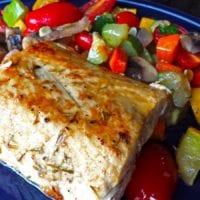
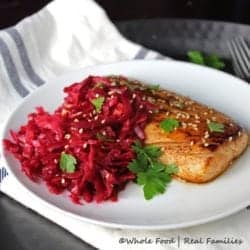
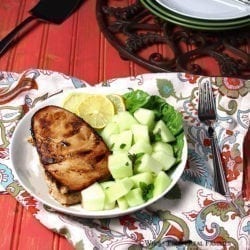
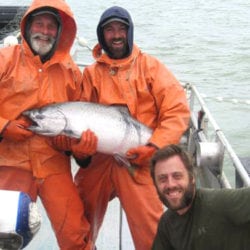
Leave a Reply